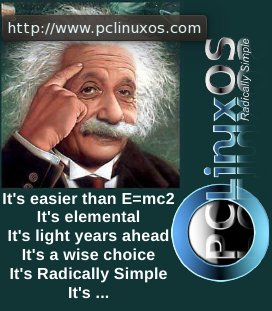| Previous
Page |
PCLinuxOS
Magazine |
PCLinuxOS |
Article List |
Disclaimer |
Next Page |
Want To Get Started In Photography On A Budget? |
|
by The_CrankyZombie & Paul Arnote In the PCLinuxOS forum, hakerdefo posted a good question to our resident cook, HTML and Ebook creator, webmaster, networking guru, and photographer, The_CrankyZombie. Here it is in its entirety: So if someone who is permanently broke (financially) and totally new to photography and wants to buy a camera to learn photography, what would be your recommendation? Hakerdefo's question, coupled with The_CrankyZombie's reply, gave birth to this article. Anyone who has spent much time in the forum will recognize the hundreds of photos that The_CrankyZombie has posted and shared with the PCLinuxOS forum members. Here is The_CrankyZombie's well thought out reply to hakerdefo: Buy the best camera you can afford, even if that means buying a used camera. Don't buy a lens just because it is cheap. Most of the time, you will just be wasting your time and money with it. Good glass costs money for a reason. Learn the limits of what your lens will do. Prime lenses usually perform better than zoom lenses of the same length, but they may also cost more. Before you buy an expensive telephoto lens, try renting one first and see if it does the job you need. In the long run, it will save you money. Learn your camera inside and out, and don't rely on the "A" (automatic) setting. Learn the P, T/S, A or M mode or on some cameras like Canon. The P, AV, TV, M modes are called the creative modes, and each one gives you a bit of different control over the camera, with the M (manual) mode being fully manual. Don't be afraid to experiment with them. A tripod/monopod is your friend, so make good use of your friend. Beside anything else, practice, practice, practice taking photographs. Don't just take a picture. If you don't understand something about your camera or photography, ask. The only dumb question is the one no one asks. Join a photography club if there is one near you. Learn from other peoples experience, because they are a wealth of knowledge. Most of all, take your camera everywhere you go. You never know when you will get that "Oh, My God" photo. As for which model of camera is the best, I'm sorry that I can not tell you. While cell phones, point and shoot and bridge cameras all can take some great photographs, the dSLR and the ILC (interchangeable lens) cameras still rule the roost, and for good reasons. As for which one works for me, that is pretty simple to answer. It is the one that is in my hand. It is the person that is taking the photograph, not the camera. For me, I prefer a Canon dSLR. I also have a mix of lenses from consumer grade to professional Canon "L" lenses. They also date back to yesteryear of the film era 60's & 70's (fully manual) to the modern that are fully automatic with image stabilization. Just remember that the lens is far more important to a good quality image than that of the camera itself. While it is true good equipment helps, the equipment does nothing without the person holding it and seeing the world through the lens. Don't expect that you are going to take perfect photos every time. That just will set you up for disappointment. Just ask me how I know that. Perhaps some of the other users here will chime in on their ideas. I know parnote and tuxlink have a lot of experience. If you have questions, by all means, please do ask. Paul's Photography Journey As for myself, I was a professional newspaper photographer in my "former life" (before I left the field and started a second career as a respiratory therapist). I studied journalism when I was a student at the University of Kansas. I've worked as a "stinger" (freelancer) for the Associated Press, United Press International, the Kansas City Star, and the (now defunct) Kansas City Times, and as a staff photographer for the Independence (MO) and Blue Springs (MO) Examiner. I've won awards for my photos from press associations, and I've had my pictures appear in newspapers all over the world. My interest in photography began when I was 12 years old. As a kid in the 1970s, I didn't have a lot of money, but that didn't deter or dampen my desire to learn about photography. Armed with the 35mm point-and-shoot camera that I had worked and worked to save up for by mowing lawns, saving my allowance, birthday money and any other source I could wrangle, I went to the local public library and read EVERY. SINGLE. PHOTOGRAPHY. BOOK. that I could get my hands on. Back then, the library had a complete set of the Time-Life books to learn photography from. I read every one of them, cover to cover, multiple times.  Fairly representative of my first 35mm camera It wasn't long before I was looking around and thinking of what I saw in terms of shutter speeds, apertures, depth of field, ASA/DIN, composition, and all of the other things that photographers of that time were ruled by. Rather quickly, I outgrew the capabilities of the inexpensive point-and-shoot camera that was my first camera. I needed something that didn't do everything for me, exposure-wise, anyway. By that time, I was working part-time at the local drive-in theater on the daytime cleanup crew. It was time to start saving again, this time with me saving my weekly paychecks from the drive-in theater. I needed a SLR camera. 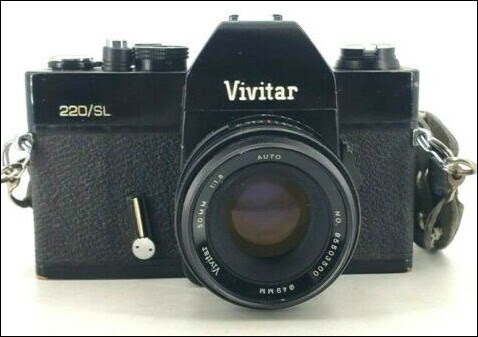 Sometime around 1975, I found a brand new Vivitar 220/SL camera from a mail-order photo store in New York city, complete with a Vivitar 50mm f 1.8 lens. It had a built in center-weighted light meter, a self timer, and accepted universal 42mm Pentax screw-mount (M42) lenses. The photo above is from eBay, and its current price there is/was $50. I paid $148 for the camera when I bought it, including shipping and handling and C.O.D. fees (remember those?). Over time, I added a Focal (K-Mart brand) 135mm f 2.8 telephoto lens, a generic 28mm f 2.8 wide angle lens, and a Spiratone 400mm f 6.3 manual aperture lens. As a teen with very limited funds in the 1970s, I came to LOVE the old Spiratone photography store. They had ads in the back of ALL the photography magazines of the time. One thing they sold -- and they sold a LOT of these -- were very cheap manual aperture lenses. Yes, it's a real PAIN to use a lens with a manual aperture. You have to remember to close the aperture before you shoot your picture. But, at the time, it was the only option that I could afford. I'm not sure if these types of lenses even exist today (but you can buy them used on eBay all day long). Around this time, I "inherited" my dad's old 120 format twin lens reflex camera. The reflex mirror was in poor shape, so I remember carefully taking it apart (myself) and successfully replacing the failing/peeling/mottled mirror. That was a fun camera to shoot. Also, one of my journalism instructors in high school gave me an old Argus C3 35mm rangefinder camera, circa 1940s. That was also another fun camera to shoot, and one I shot more frequently, since I also developed my own film and printed my own pictures by that point in time.  When I got to college, I realized that my old equipment wasn't going to allow me to grow my photography skills the way I needed it to. So, I sold my old equipment to my cousin, and bought an Olympus OM-1 MD. I soon thereafter bought myself the motor drive for the camera, a 28mm f2.8 lens, and a 135mm f2.8 lens. I used this combination for a couple of years, with good results. 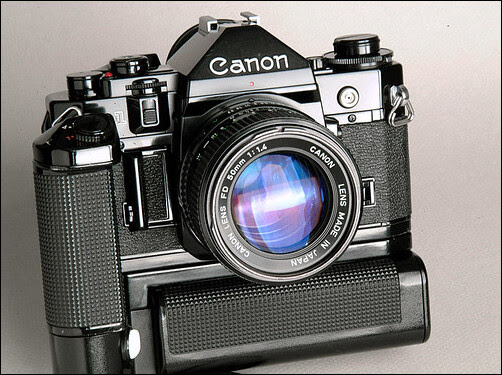 At that particular time in the late 1970s, the "popular" brands of 35mm SLR cameras were Nikon, Canon and Minolta, with the first two used almost exclusively by all the professional photographers I crossed paths with. Nikon was the higher priced of the two, so I again switched camera systems, going with Canon. Plus, the Canon A-1 was all the rage, having just come out. I sold my Olympus camera and purchased two Canon A-1 cameras, both with high speed motor drives. I found an older used Canon 35mm f2.0 lens, and purchased a brand new 100mm f2.8 lens. That's what I started with for the Canon. I later added a 24mm f2.8 wide angle lens, a 200mm f2.8 telephoto lens, a 300mm f4.0 telephoto lens, a used 400mm f4.5 telephoto lens, and later a 300mm f2.8 telephoto lens. All of the lenses I bought were Canon branded lenses. 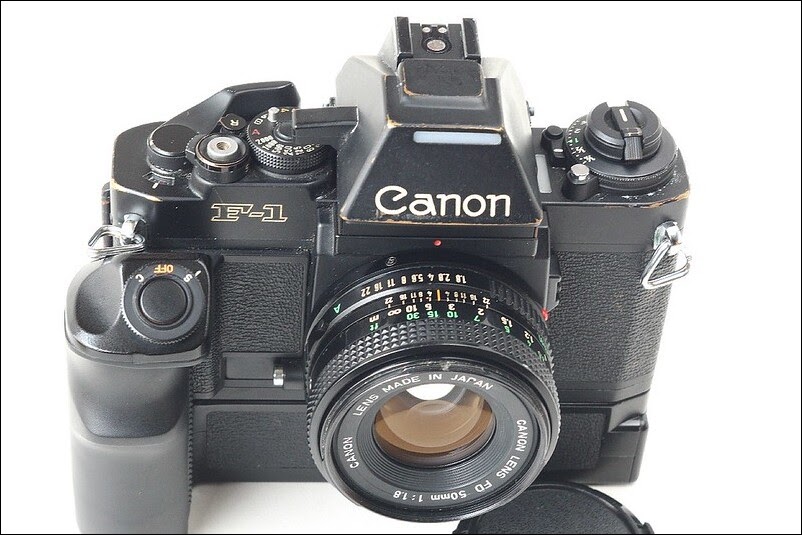 I later added two of the new Canon F-1 cameras, also with high speed motor drives. They joined my two A-1 cameras, but became my main cameras up until I left the field. It is with the Canon equipment that I won awards. I still have much of my Canon professional equipment, although I do admit to selling off one F-1 camera body, as well as the 400mm f4.5 and 300mm f2.8 lenses. So, I went from a 12 year old spending his lawn mowing and birthday money on his first camera, to a working professional photographer, in steps. I did not go out and buy the most expensive professional grade equipment at the outset. I worked my way up to it. After switching professions, I didn't really seriously touch a camera for another 12 or more years. When I quit working as a professional newspaper photographer, I really didn't realize just how "burned out" I was. I just needed to let photography "rest" in the background for a while. 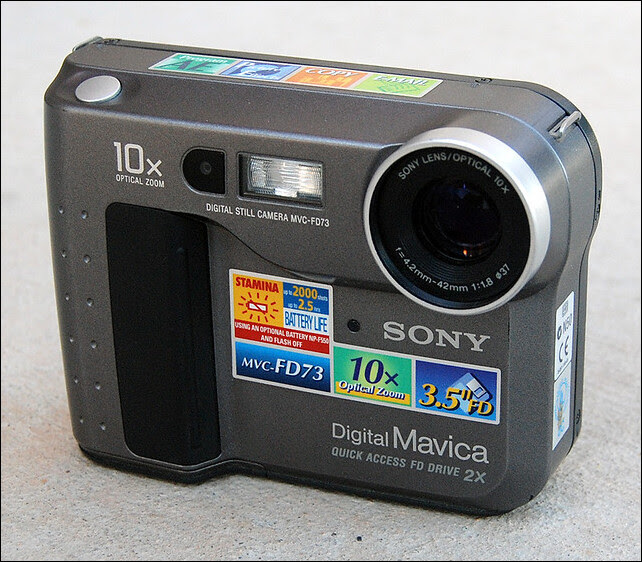  Digital photography was barely a newborn in the late 1980s, when I left the profession. When me and my colleagues at the newspaper saw the results of the "new" digital cameras with its blurry, pixelized, postage-stamp sized images, and upon hearing that "digital cameras were the future of photography," we scoffed and laughed. Its images rivaled a Rorschach test in clarity. I distinctly remember the discussion going somewhere in the direction of, "We have nothing to fear. Film will ALWAYS rule the photography world!" How little did we know how rapidly digital camera technology would advance, and how quickly digital would replace film as being the mainstay of photography that we now know it to be today. What rekindled the photo bug in me was the emergence of digital photography that was approaching the quality of film. It married photography, at least in my mind, with my other passion of computers. Starting with the Sony Mavica FD73 (640 x 480 images and a 10x optical zoom) that stored images on a floppy drive, I've had a number of digital cameras over the years. I currently have (amongst the many digital cameras I own) a Canon SL1 dSLR with a small, overlapping assortment of zoom lenses. I've also purchased an adapter that allows me to use my manual focus Canon FD lenses with my SL1. In between the FD73 and the SL1, I have the Sony Mavica that stores images on miniature CD-R discs, a couple of point-and-shoot digital cameras (one of which resides in my hunting backpack for those hunting trophy shots), a Fujifilm bridge camera, and a Canon bridge camera. Taking pictures of the kids keeps that interest in photography burning. The_CrankyZombie's Photography Journey I dipped my toes into photography when my Grandfather gave me a Yashica A TLR (Twin Lens Reflex) Camera for my 15th Birthday. It wasn't new, as he had bought it in 1959 for a whopping $35.00, but now it was mine. I remember the first roll of 12 exposure 120 film I shot with it, and the waiting to have it developed. 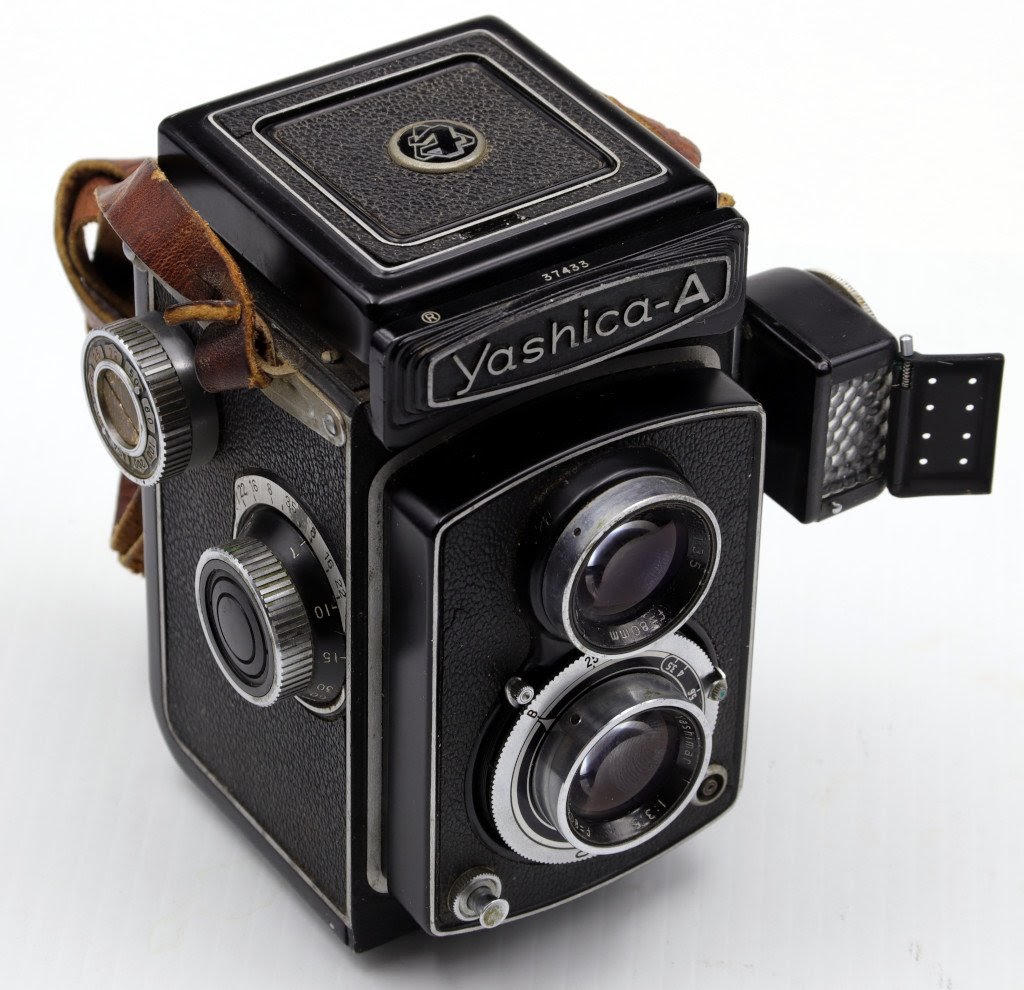 Yashica A - TLR (Twin Lens Reflex) - No batteries required! I used it until I went into the Army in 1972. After basic training, I went so far west I ended up in the Far East, Okinawa, Japan to be exact. Back then the dollar was worth 3 times more in Yen than it is today. A pineapple from the fields in Northern Okinawa would set you back 100 yen or about 33 cents. Ah, life was good and consumer goods were cheap. In 1973, I bought my first SLR Camera, a Yashica TL Electro X, with a Yashinon DS-M 50mm 1:1.7 lens and a 80-200mm telephoto lens. It cost me several months of pay. I used this camera into the mid 1990's. I do still use both my Yashica A TLR and my TL Electro X occasionally. But the cost of film and developing is expensive. I just sent off a roll of 120 12 exposure film to be developed and scanned. It cost $31.25 to get back the developed film negatives, a disk of scanned images and a new roll of 120 color 12 exposure film. Only you can judge if shooting film is right for you. 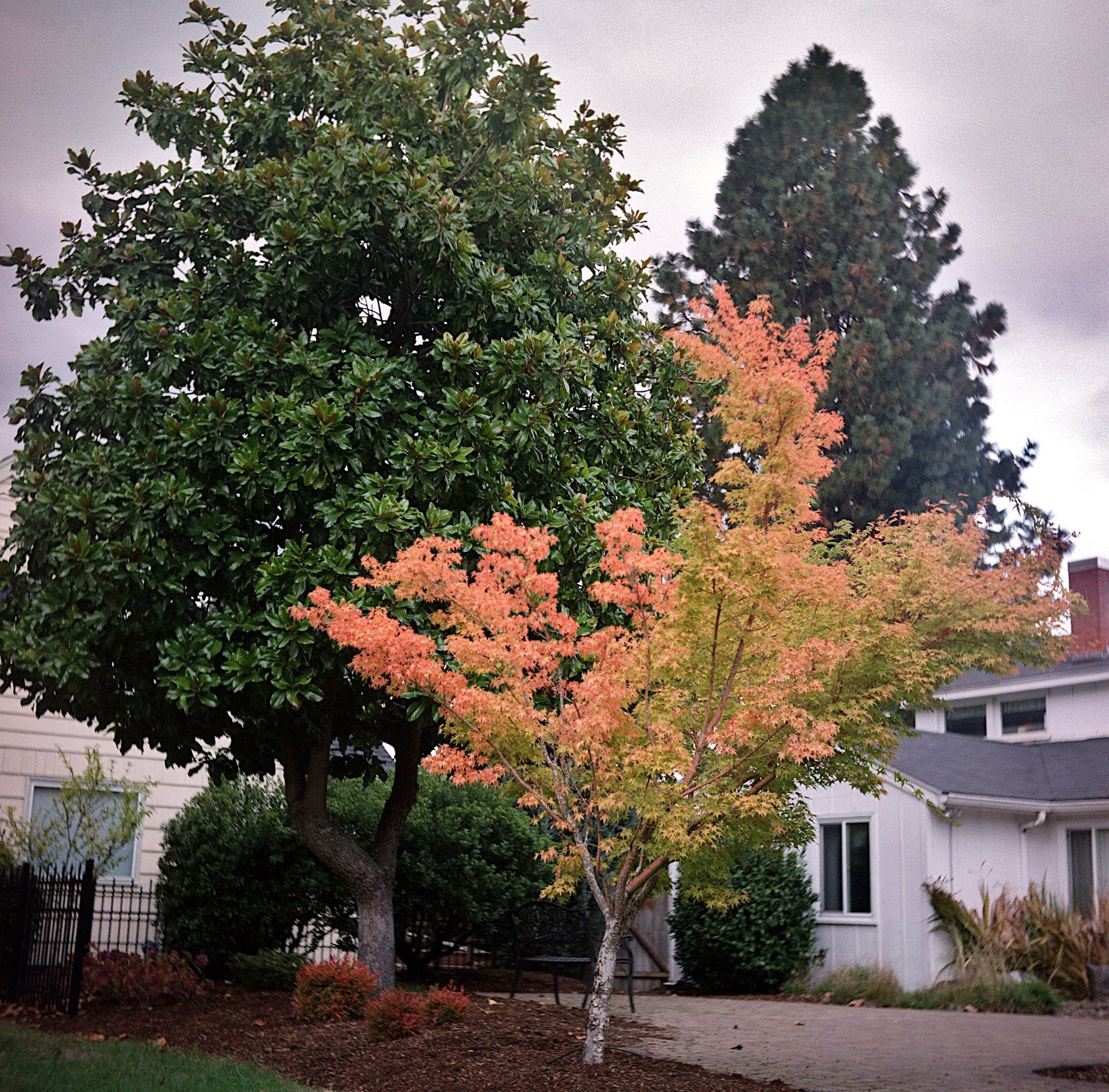 Taken with the Yashica A - TLR Camera 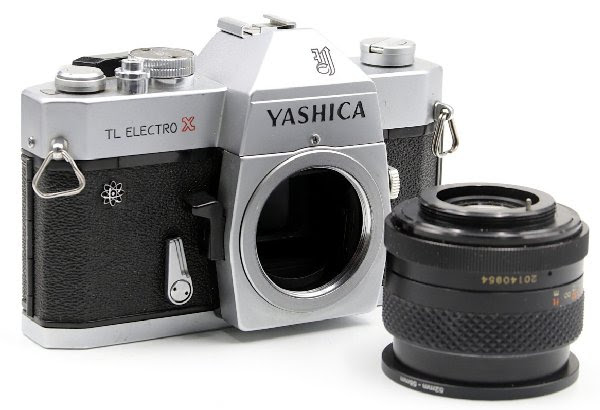 Yashica TL Electro X with Yashicon DS-M 50mm M42 screw mount lens My first digital camera was the Kodak DC50 (1996) . It was a whopping 0.38 megapixel CCD sensor, and took a picture at 756x508 resolution, with a 1 megabyte internal memory which would store 6 images. It could also use a PCMCIA card, which could store 26 images. It only stored images in Kodak's proprietary KDC file format. At the time the DC50 came out, it was the first digital camera to cost under $1,000 to support PC Cards (PCMCIA) type I and II. 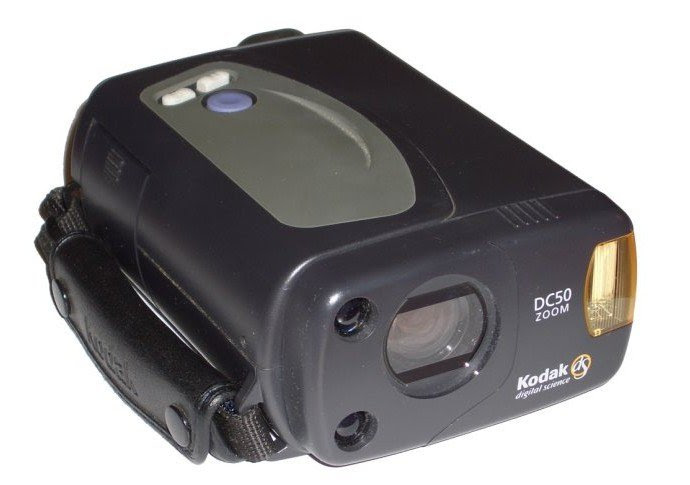 Kodak DC50 0.38MP In the early 2000's, I bought a FujiFilm S3200 Bridge Camera. A 14 MP Digital Camera with a Fujinon 24X Super Wide angle Optical Zoom Lens (24mm-576mm) While it was a nice camera in my ways, it just wasn't as sharp as it should have been on the longer end. The camera was just missing something I wanted and needed. I put up with the shortcomings, until 2015-2016 when I was talking to a friend, and he offered to sell me a spare camera he had. 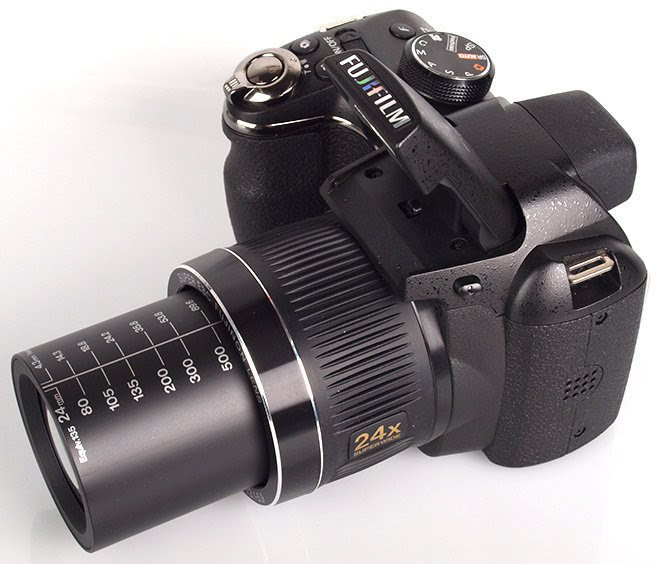 Fujifilm S3200 14MP Super Zoom Bridge Camera 24mm - 576mm This has the same size sensor found in a Samsung Galaxy Camera 1/2.3-inch sensor Soon, I was the owner of a Canon XTI, a 10MP dSLR. I bought a couple of lenses for it. What I had felt was lacking in the Fujifilm camera, I found in the Canon. I suddenly found the sharpness and clarity that had been missing. 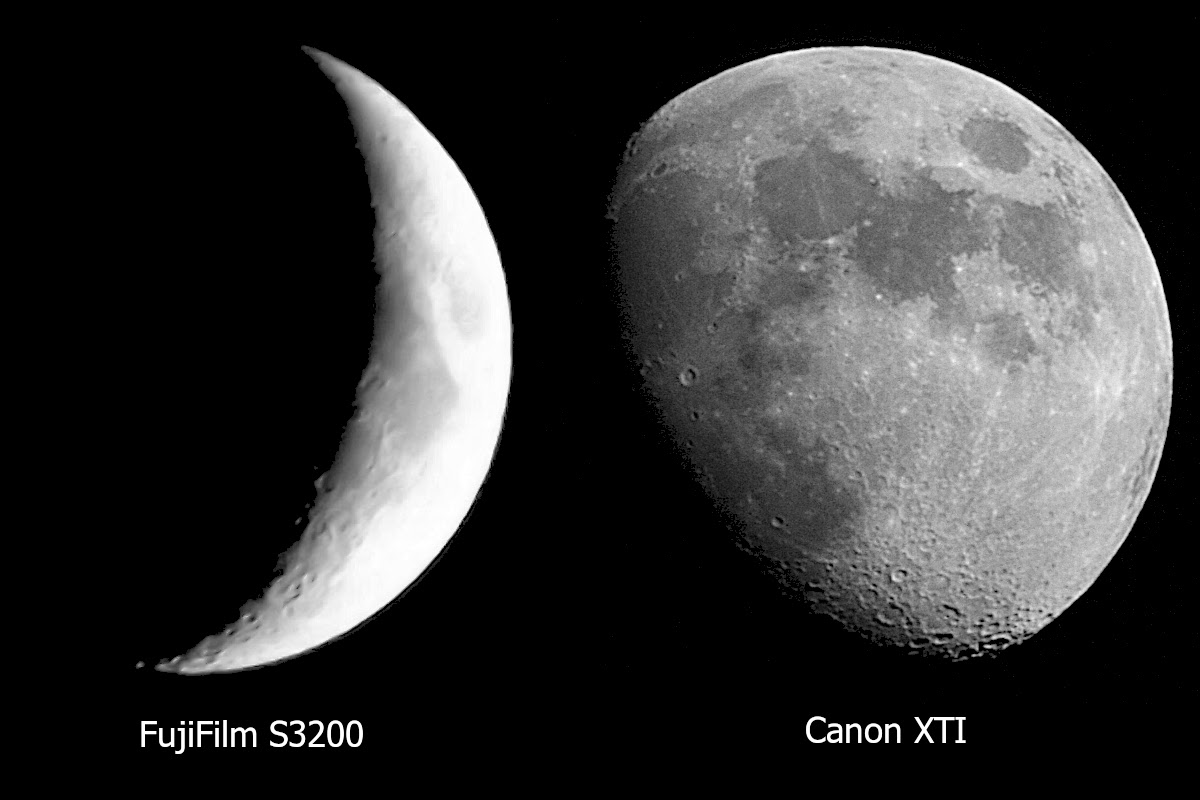 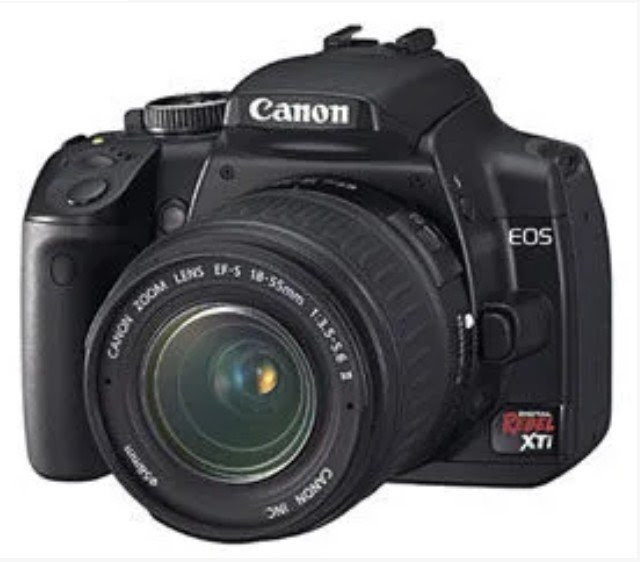 Canon Rebel XTI 10.5MP APS-C dSLR I used the Canon XTI until I bought my Canon SL2 24mp dSLR in January 2019. 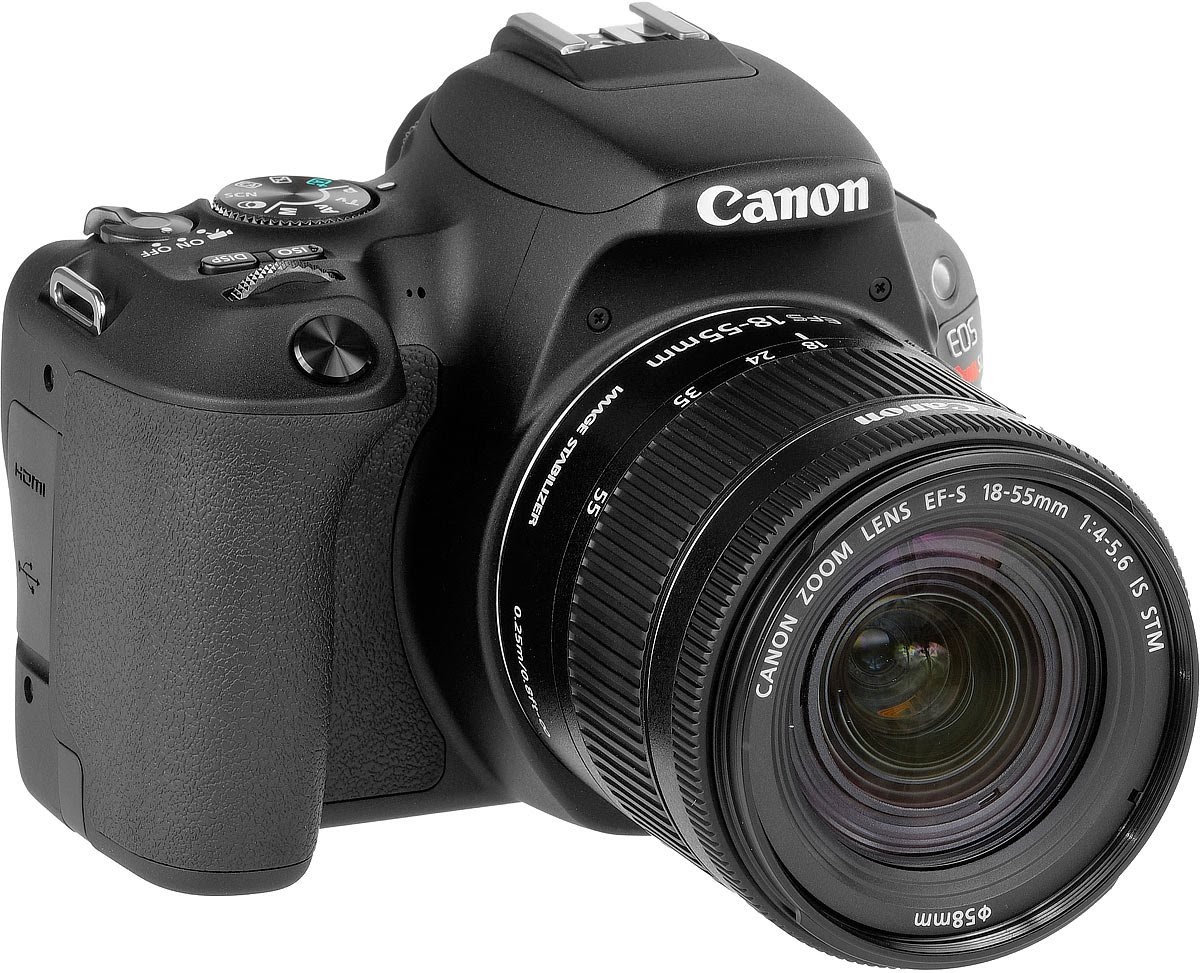 Canon Rebel 24.2MP SL2 APS-C dSLR In 2020 I bought my first MILC Camera (Mirrorless Interchangeable Lens Camera) the Canon M50 24mp. It was very similar to the SL2 dSLR, with the biggest exception of not having a mirror, and using a newer EOS-M lens mount. You can use the EF and EF-S lenses from current to the ones made back in 1986 with the proper EF to EOS-M adapter. The M50 does have some features that the SL2 doesn't have, like the latest digi 8 processor, an electronic viewfinder, and has 4K video, while the SL2 has only 1080p. However, the battery life sucks on the M50. It is power hungry. If you are into shooting videos or vlogging, a M50 is the better way to go. As for the camera size and weight, the SL2 and the M50 are close to a tie. I chose to sell the M50 and kept the SL2. 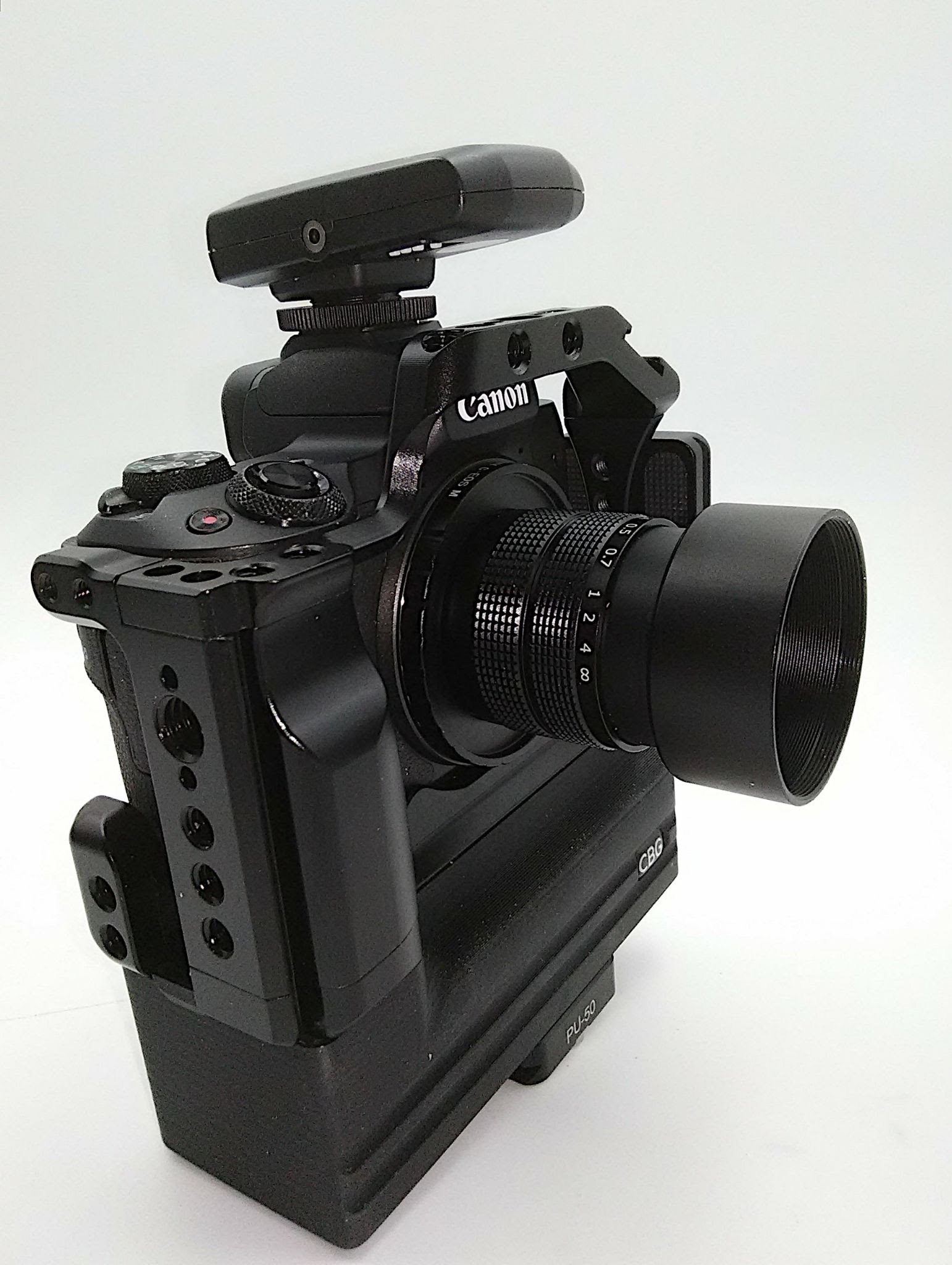 Canon M50 24.1MP APS-C MILC (Mirrorless Interchangeable Lens Camera) I just recently bought my first full frame camera, a Canon 5D with a 50mm lens, for under $100.00. It is a used camera, but that doesn't really matter. However, the fact that it is a full frame camera and they are built "battleship rugged" still matters. It can use all the same lens that I use on my Canon SL2. I have over 20 lenses I can choose from in my collection, from vintage lenses to Canon's "L" series professional lens. You can use most any lens, except for those made for a APS-C camera (EF-S) or the MILC lenses (EF-M/EF-R). You can even use Canon's FD lenses and non EF mount lenses from other camera manufacturers, using a proper adapter. 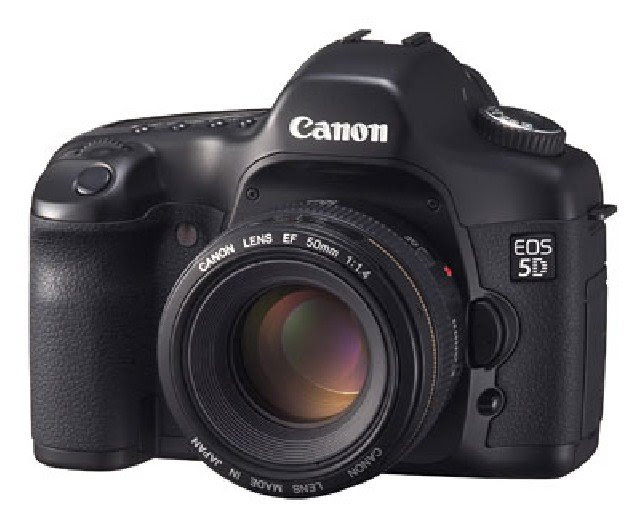 Canon EOS 5D 12.8MP Full Frame Camera Getting Started On A Budget So now, you might be asking, "I don't have a lot of money, so how do I get started in photography?" Fortunately, getting started in photography is much easier and much less expensive today than it was when I got started in 35mm photography. "Back in the day," you had to be able to afford film, and then pay to have that film processed. Today, the new normal is digital photography. You take a picture and you store it on a SD memory card, which can then be transferred to your computer. Once your images are on your computer, you can pick through your photos, edit them, and then select which ones you want to print out. Before, you had to pay to have prints made of every single image, whether it was exposed properly, out of focus, or some other malady that would strike. Now, you only print out the ones you want. So, where do you find affordable used equipment? One place to check is close to home, in the Craigslist Photo & Video category. Sort through the offerings, because you will find a LOT of vintage cameras and 35mm cameras. Just a quick perusal of what's for sale in my area around Kansas City, I found a Canon A1100 for only $15. I also found a Canon SX 500 IS 16MP digital camera for only $100. Both are quality digital cameras, even if they are not dSLR cameras. But hey ... you have to start somewhere, right? For not much more, I found a Sony A200 DSLR Camera with two lenses for only $120. If you don't find something right away, keep looking. The offerings on Craigslist change frequently, and you never quite know what you're going to find. You can also look on eBay, but don't expect to find super bargains on there as easily. Most of the people selling on eBay KNOW what they have, and price it accordingly. That's not to say, though, that there aren't bargains lurking out there. They are just a lot harder to find. Don't forget about checking out garage sales, carboot sales, thrift stores, and flea markets. You can find literal steals at these locations. Don't get in a hurry and keep in mind that on many days, you WILL come up empty. But, perseverance pays off in a huge way, with you walking away with some very high quality photography equipment for pennies on the dollar. Of course, if you can afford it, new photography equipment is available that fits into many budgets. Do your research, and you might just walk away with a really great deal when stores are clearing out last year's models for the new, incoming models. Whichever route you choose, take your time to really LEARN your camera, its capabilities, and its limitations. Knowing your "tool" is the first step in becoming a more accomplished photographer. Conquer The Basics Now that you have a camera, it's time to conquer the basics of photography. With so many factors to pay attention to when learning photography, it's easy to become overwhelmed and not really know exactly where to start. Having the equipment -- your tools -- is only a part of the journey. So, what follows are my suggestions, based on my experience. Shutter speed is shutter speed, whether you're shooting film or digital images. Aperture is aperture. Depth of field is depth of field. Focal length is focal length. Exposure is exposure. ASA is ASA. The rules of composition don't change with the format (film or digital). Those basic concepts of photography have been in play since the time that the very first photographic image was made. So, I suggest that you read, read, read. Then read some more. Conquer each concept before moving on to learn another concept. You will find that some concepts are interrelated, but don't let that deter you. BUT, as you're reading, DON'T just keep reading without practicing what you are trying to learn about. Conquer ONE TOPIC AT A TIME. When you're reading about apertures, try your camera out at large and small apertures, and pay attention to the results you get. What's different? Which works out best, when? The same thing applies to all of the other aspects of photography's more technical side. When you're learning about shutter speeds, see what happens with a fast shutter speed versus a slow shutter speed. When you're learning about depth of field, see what happens with shallow depth of field, versus deep depth of field. Grasp each concept before you move on to learn about another! Because it's the way I learned, I have a soft spot for the Time-Life photography books that I read in my local library. I would be surprised if they were no longer available in many libraries around the globe. Of course, there are many other photography books available in local libraries. I know. I read them ALL (at least the ones that my library had in their collection) many, many years ago. Of course, with the explosion of the internet, photography students can also find many online resources to utilize in their photography education. That is a resource that wasn't available to me when I learned, and one that I think would have been helpful. So, which concept should you start with first? I say learn the rules of composition. You can have the most perfect exposure, the most appropriate depth of field, etc., etc., but still produce a photo that leaves viewers going "meh," all because the image wasn't composed properly. Take the time to learn about the "Rule of Thirds" and how it applies to photo composition. Following this basic concept will make your images visually powerful, and will sometimes lead your viewer's eye to other important elements in the image. That doesn't mean that you sometimes can't center your subject in the frame, but do keep the concept in mind when you're shooting your photos. It can make a whole world of difference. Summary We only wanted to help get you started down the path of learning photography, and making better pictures. We don't/won't/can't provide all the photography education you want or need in the pages of this magazine. It's not our purpose, and there are better resources for that. There are also more online resources than we can even begin to list here. Just use your favorite search engine, and search for "beginning photography" or "learn photography" or something else of that sort. You will have absolutely NO trouble finding instructional sites on the internet. We hope that we have at least given you some idea of exactly where to start on your journey to learn photography. Whatever happens, don't give up. It may be a long journey, but one that's worth it and one that will pay dividends that you can see in the quality of your images. |












